The Type 4X, the Type 45 Destroyer replacement, is just an early concept at this stage but a variant of the Type 26 Frigate is officially being considered for the job.
UPDATED 21/10/20
The UK Defence Journal has been speaking to Paul Sweeney, former MP for Glasgow North East and former shipbuilder. We have been told that consideration is already being given to the development of an Anti-Air Warfare variant of the Type 26, a variant that will function as a future replacement for the Type 45 Destroyer fleet – the programme is currently referred to as as T4X.
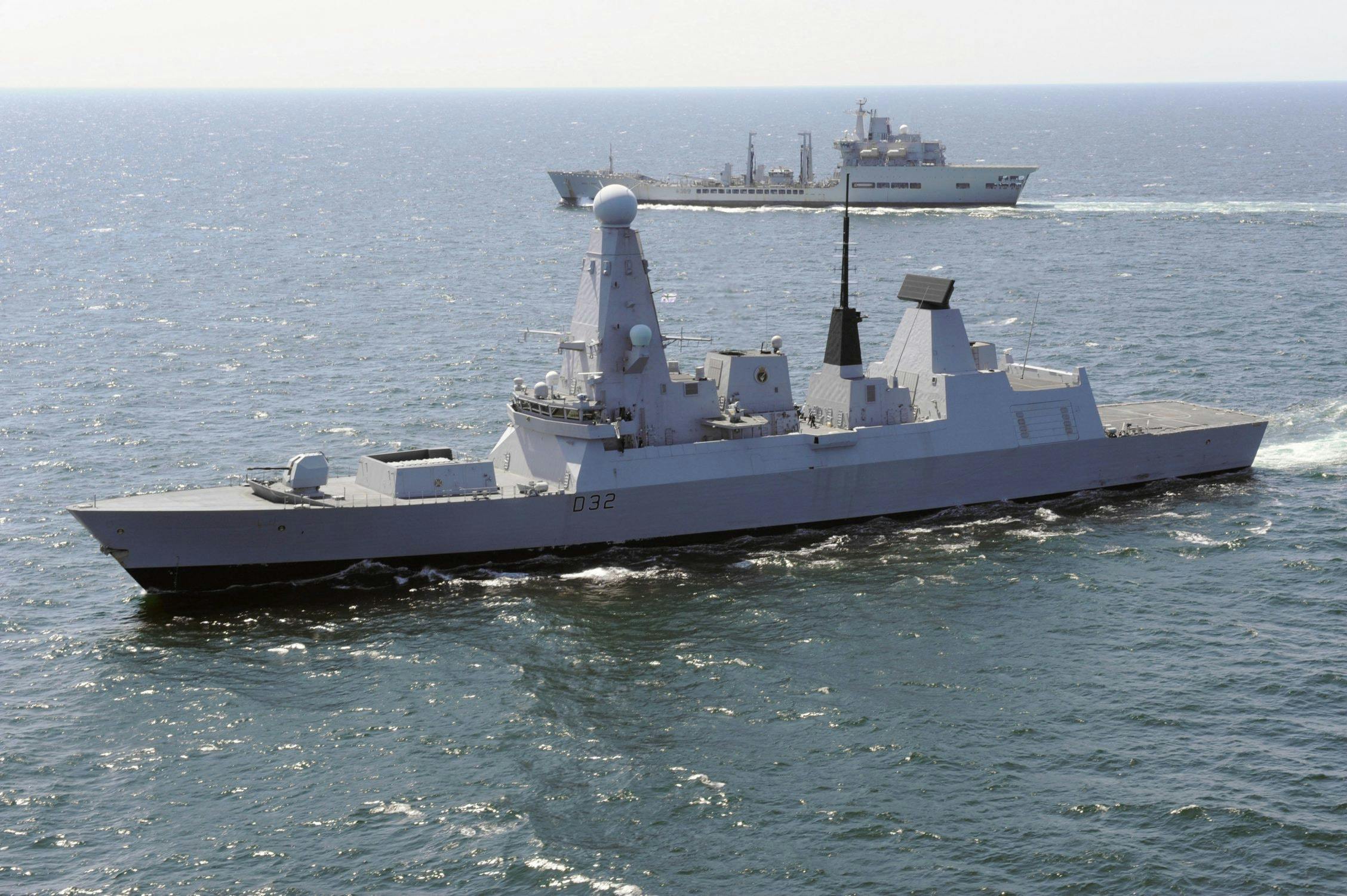
For a little bit of context, Paul Sweeney is a Scottish politician and was the Member of Parliament for Glasgow North East until the last election. More importantly for the purposes of a discussion on shipbuilding, he was formerly employed by BAE in Glasgow. Paul has worked with the APPG for Shipbuilding which published the results of inquiry into the Government’s National Shipbuilding Strategy, taking evidence from a range of maritime security stakeholders and industry.
It is understood that the Ministry of Defence have an aspiration is to achieve continuous shipbuilding with the Type 26 programme in Glasgow beyond the current planned number of eight vessels.
Sweeney told me after attending the steel cutting ceremony for the future HMS Cardiff:
“It is clear that we now have a unique opportunity to create a truly international naval shipbuilding alliance with Canada and Australia with Type 26 (both countries have purchased the design) – and consideration is already being given to the development of an Anti-Air Warfare variant of the Type 26 as an eventual replacement for Type 45 – known currently as T4X.
The aspiration is to achieve continuous shipbuilding with the Type 26 programme in Glasgow beyond the current planned number of eight vessels.”
I’ve also been told that the 4X project has a nickname, ‘Project Castlemaine’. Pun intended.
What’s happening right now with the Type 26 Frigate build?
Eight Type 26 Frigates are to be built in total with three in the first batch, the contract for the second batch will be negotiated in the coming year.
Ordering in batches is common for projects of this size around the world and was last seen with the Royal Navy for the Type 45 Destroyers and recent Offshore Patrol Vessels. The Type 45s first batch order was for three vessels for example.
The last vessel in the class is likely to be in the water by 2035.

When asked about what comes after the Type 26 on the Clyde, Sweeney made mention of the desire to keep building a new vessel based on the Type 26 Frigate.
“Discussions are at a very early concept stage, but the merits of continuous build using T26 as a common family was clear from my conversations with BAE directors and MOD decision makers.”
“They said they were ‘keen to make the numbers work’ on it”, he added.
The Type 45 Destroyers are expected to begin going out of service in the thirties, perfect timing given the last Type 26 Frigate is expected to be launched in 2035.
Is the Type 26 Frigate suitable for hosting the required sensors for anti-air warfare work?
The Type 45 destroyers use the SAMPSON radar with the PAAMS missile system, now referred to as ‘Sea Viper’ in UK service. SAMPSON itself is a multi-function dual-face active electronically scanned array radar produced by BAE Systems on the Isle of Wight but it’s a big, heavy and expensive piece of kit.
SAMPSON provides surveillance, target tracking and missile information and on the Type 45, the radar sits nearly 40 metres (131ft) above sea level at the top of the ship’s distinctive mast.
However, some defence commentators have expressed concerns over whether or not the Type 26 Frigate hull is capable of supporting the system and required mast.
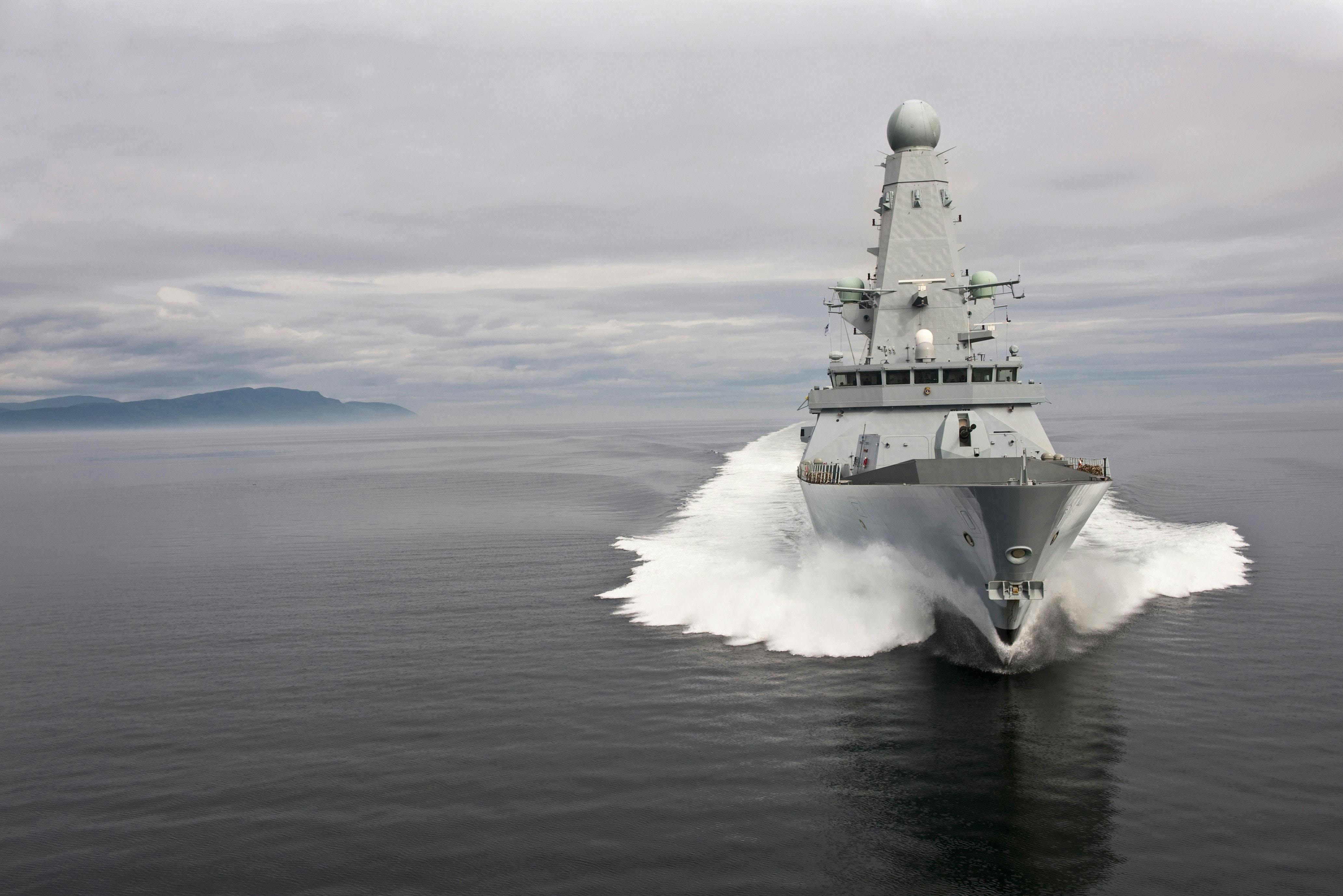
Addressing this, Paul told me that the vessel is capable of being fitted with a radar mast similar to that seen onboard the Type 45 Destroyers, the mast that puts some in mind of the ‘Coneheads’ from TV.
“The Type 26 is of sufficient beam to be fitted with a tall Sampson type MFR radar mast – especially given the latest composite design options – so there is the basis to have a common hull type and family of ships: ASW, GP and AAW.”
What does this approach mean for UK shipbuilding?
In a previous discussion, Paul pointed out that the aspiration for shipbuilding in the UK according to officials, would be to have two main yards for warships. The first being the Clyde with its Type 26 frigates and an eventual replacement for the Type 45 destroyers and the second site, currently somewhat up in the air given no contract has yet been awarded, would focus on building Type 31e Frigate.
“The Ministry of Defence want to get to a position where there is a constant rolling production line of Type 26/Type 45 successor and a second production line of Type 31e – building both lines permanently. As older ships leave service or are sold abroad, new vessels enter service.”
We all remember the proposed ‘Frigate Factory’ for the Clyde, dropped by BAE after the UK Government scaled back and slowed the pace of the Type 26 Frigate build. Could such an approach finally see it built? Well, I once again asked Paul.
“This opportunity would enable the proposed ‘Frigate Factory’ or Modern Dock Hall concept to be realised, which would finally deliver the purpose-built shipyard infrastructure to maximise shipbuild efficiency, which is similar to the level of investment that is being made in Adelaide by Australia and in Halifax by Canada for their respective Type 26 frigate programmes – that will ensure that the Clyde will then be in pole position to win further export orders for third party countries which are not interested in ensuring domestic build (e.g. New Zealand) as the cost significantly reduces over time and reputation of the ship is established.”
Sweeney also discussed the Type 31e, echoing a concern that many commentators have also expressed, that the vessel may ultimately detract from the Type 26 Frigate programme.
“There is also now increasing doubt that Type 31e will ever live up to its expectations on cost, capability and delivery schedule. Perhaps it might be best to emulate what Canada and Australia are doing and focus our efforts on an increased drumbeat of Type 26 production at a purpose built national naval shipbuilding centre of excellence.”
Given the aim being aspired to for two main UK production centres for fighting ships, this would in my view make long term orders from the Government more feasible as hopefully the cost may be reduced through efficiencies that are inherent to a large, single site.

Currently, ships are largely built in Govan and floated down the river to Scotstoun to be fully fitted out.
Such a commitment from the government in the form of more long term orders would perhaps enable BAE Systems to invest in the kind of frigate factory/modern dock hall discussed in previous years with all of this putting the industry on a more secure and sustainable footing.
It’s not a new concept either. Doing work like this would maintain relatively constant production, similar to the Arleigh Burke class in the United States which has now been in build for decades with each batch being superior to the last.
So, what does this all mean?
A Type 45 Destroyer replacement based on the Type 26 would provide a tangible means to meet the aspiration of continuously producing two standard classes of ships for the Royal Navy, allowing for a more sustainable UK shipbuilding industry.
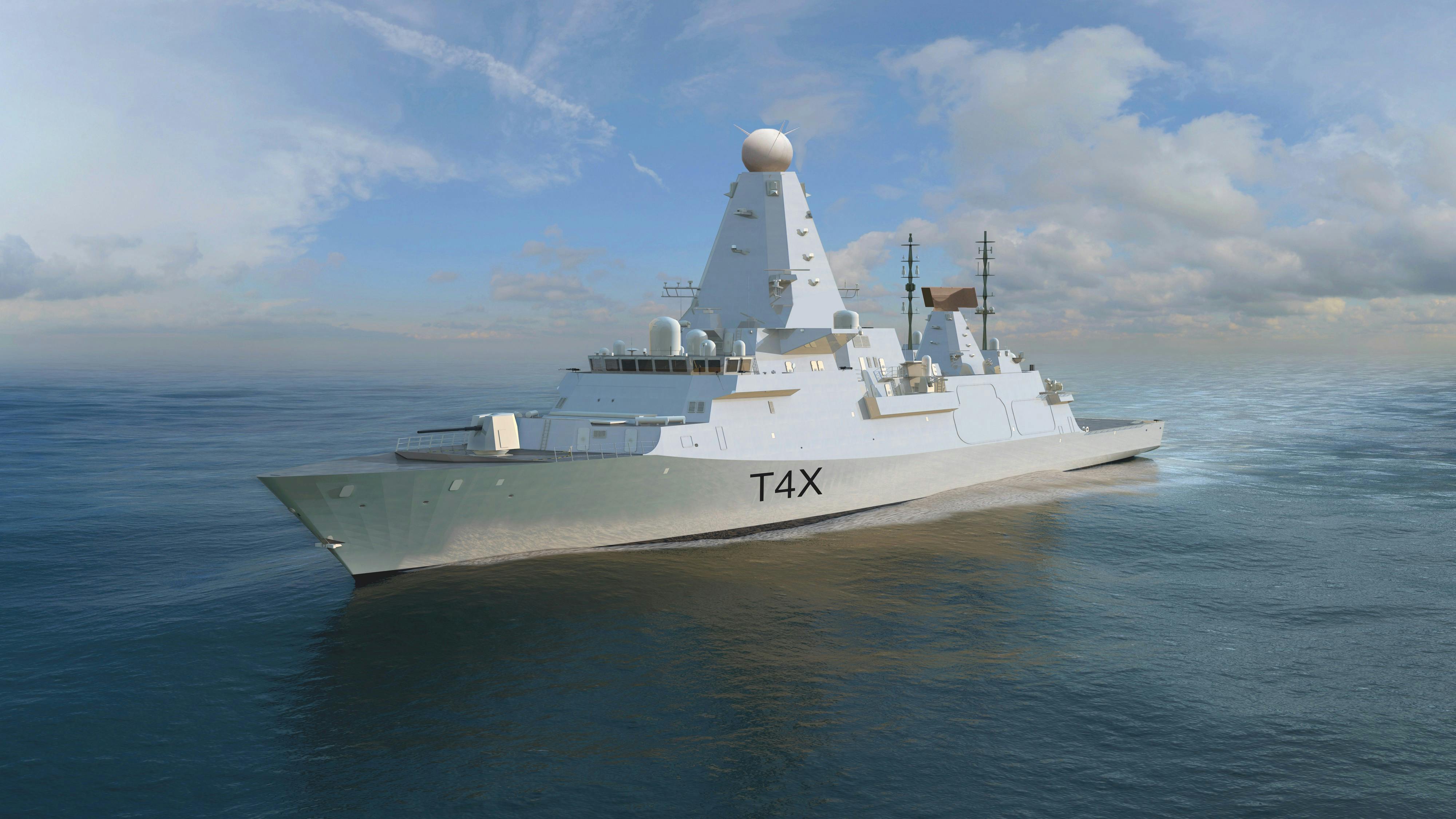
As I’ve said time and time again, the UK needs a better way to effectively sustain its shipbuilding industry, let’s hope we’re heading in that direction.


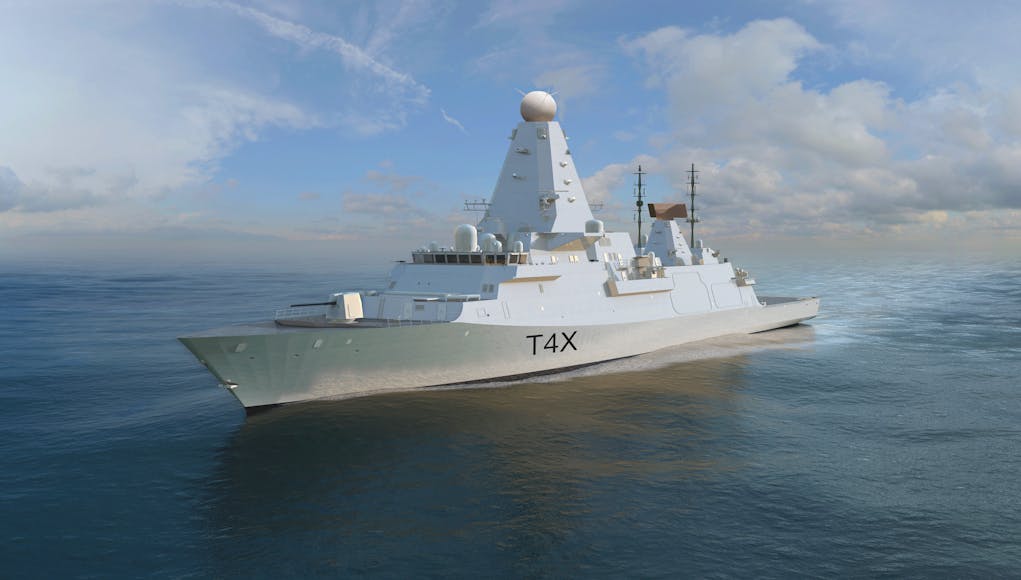
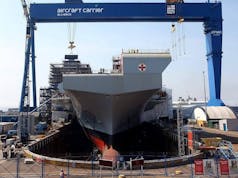
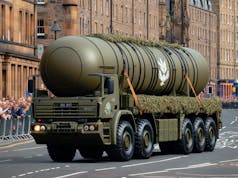
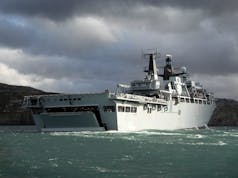
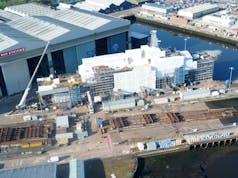
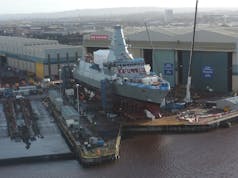

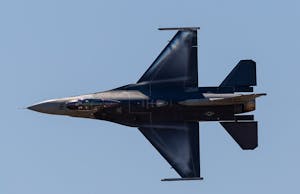









‘It is understood that the Ministry of Defence have an aspiration is to achieve continuous shipbuilding with the Type 26 programme in Glasgow beyond the current planned number of eight vessels.’
This would be very good news indeed.
It’s not news, this is one mans biased wishes.
Exactly.
Please explain.
It is the wishes of the person that the author interviewed.
IIRC Mr Sweeney is a bit of a champion of the Clyde and has a bee in his bonnet about the heinous BETRAYAL that some Tory bastards committed upon the Clyde and Scotland by breaking the solemn promise that 13 frigates would be built in Scotland without ever mentioning that there are actually 13 being built with plenty of export orders to come.
He is economical with the truth and has an agenda, he is also a civilian who has no access or knowledge of what is being planned.
He is a liar.
I can’t tell if you’re being sarcastic with the ‘betrayal’ if the Clyde, I hope you are
Indeed, those are his words I think.
if we are looking at construction beginning around 2030 – should we be looking at sampson? surely should be able to make something even better by then – specially with all this talk about the tempests new radar lately
Continuing to use Sampson beyond T45 seems questionable. Major navies are moving to fixed panel AESA radar for X-, S- and L-band solutions, even on general purpose frigates, let alone AAW focused platforms. Modern advances with GaN as opposed to GaAs transmit-receive modules should allow high placement of panels for earlier sea skimmer detection. The Australian Hunter class based on T26 is one relevant example going in this direction and the updates to their older Anzac class now use fixed panels for L-band and S-band with X-band illuminators.
to be honest i have no problem with the rotating dual panel design – it can pretty much cover the whole sky – and unless the panels sizes are tiny should always provide a couple of meters extra elevation – but i have to figure newer tech could provide better fidelity, range and anti stealth capabilities the australian t26 version does seem to be the elephant in the room though as pretty sure its an anti air platform as well as anti submarine that said capable as the ship might be is it BIG enough to take on the destroyer… Read more »
Up to now and for a good while yet Sampson is fine IMO, but it is likely to be outclassed as you suggest with newer tech by the time we are designing its replacement. Once we are down to just a few meters in radar height difference it translates to very short difference in detection time. The good news for the RN is that there should be a good selection of proven fixed panel solutions from the US, Oz and Europe by the time the design comes around. The larger ships in part are being driven by room to expand… Read more »
the t31 is a good design – its just a shame about the missile loadout – 12 sea ceptors is pitiful – wouldn’t be quite as bad if it was 12 mk41 strike length launchers then could quad pack in the sea ceptors maybe even a few antiship missiles – 24 or god forbid 32 mk 41’s would make it a seriously credible warship
The 12 CAMM plus the capabilities of the 57mm are fine for a light frigate role IMO. However, the T31 is a great example of how a larger ship might be upgraded relatively quickly. Provided there is power, cooling and controls circuits as required supplied to the weapons platform mid-ship and the Tacticos CMS supports them, then there are several options. One or two additional banks of CAMM could be added for 24-36 total, and there should be plenty of space in the ship to add the control cabinets for them. There is plenty of space to add 4+4 canister… Read more »
The trouble is they wont be fitted with all this kit will they? This always happens; the T45s being a case in point. Daring was commissioned in 2009, 11 years ago and neither she nor any of the others have been fully kitted out despite being fitted ‘for but not with’ and it doesn’t seem as though there are any intentions at the moment to do otherwise. Unless and until we have a government/MoD willing to properly kit out ships then the T31e will just repeat this pattern. The F-35s would be capable of carrying Storm Shadow as well but… Read more »
StormShadow isn’t being integrated because it’s getting old. It’s replacement, and considerably more flexible weapons will be integrated such as the Spear family of weapons.
Extra CAMM and MK41 won’t be fitted if they are not needed, why would they be for a light frigate role? That doesn’t mean they couldn’t be fitted in the world changes for the worst. As to T45 – if you are referring to the FFBNW MK41 then why fit it when there are no weapons currently qualified for it that the UK would want to commit to at this stage? Tomahawk is at end of life, ASROC is too limited in range and heli launched Sting Ray is more effective; we don’t need ESSM and SM-2. In addition to… Read more »
in peace time yes we dont need those mk41’s but by that reasoning we dont need any weapons on any of our frigates
been a long time since the navy fired its weapons in anger – point is they need to be a credible warship so that if we ever do need them it wont take the better part of a decade arming up all the ships
Its not so much a peacetime issue regarding fitting MK41 capability to T31 currently as it is not having any MK41 missiles qualified, and not wanting to adopt any of the current crop, except possibly at the higher end SM-6 and SM-3 level, which aren’t relevant for T31. That situation will probably change as T26 becomes operational later in the decade and as the US in particular is likely to ramp up its missile capabilities.
as i understand it seaceptor can be quad packed into the mk41 – thats its main use – its would also give it options in the future – history has told us that whatever the ship leaves the yard with is what it will have until its decommissioned – even a measly 12 mk41 would drastically increase its air self defence capabilities while adding in some possible antiship or land attack weapons
Sea Ceptor, or more specifically the CAMM missile, has several major advantages. One of them is cold launch. So yes, CAMM can be quad packed in a MK41 VLS, but its a waste of investment in a MK41 VLS designed for hot launch missiles to quad pack them with CAMM, when a low cost frame is all that’s required. As to only 12 missiles, it may be surprising but Italy only has16 Sylver cells fitted as standard in their FREMM. The new French FTI frigate and Italian PPA frigates also only have 16 cells. Sure they can fit Aster 15… Read more »
Regarding the Italian PPA Class,it looks like the Full and Light + versions will indeed use Aster 15/30/B1NT,but the Light versions will be Configured/FFBNW to use CAAM-ER,SYLVER A70 VLS being Standard accross all versions.
Cold launch has big advantages when it comes to cleaning up afterwards, not having surfaces burnt off, and having a massive toxic exhaust cloud to contend with.
Yes, and peace can end in 24 hours, or even 12. By the time the status change is appreciated, a navy could be wiped out.
The Type 31e will require a far better AA fit or simply be destroyed very early on in any conflict. The Danish vessels completely outclass our meagre proposal.
The Danish vessels were built to fulfil the same role as the Type 45s. We are simply sharing the base design. To expect the Type 31 to compete with a frontline warship is unrealistic.
If it was given a decent weapons fit, why not? The design is proven, but the UK has chosen not to take advantage of that, and instead opted for a very expensive OPV.
It is just about the cheapest ship you can get for the role it is required to fulfil. Matching the weapons fit of the Iver-Huitfeld class would mean cutting ship numbers even further and ending up with a lack of low end power projection ships. As to your ‘very expensive OPV’ comment, which OPV embarks 60 Royal Marines, has a multi mission bay, has 12+ local area/self defence missiles, has an endurance of 17,000km, a plethora of guns for close-in self defence against fast attack craft, can reach 30 knots, can permanently embark a Merlin-sized helicopter and has the space… Read more »
The point of the T31 is to keep the cost affordable, we can no longer carry on spending £1billion + for one warship, and T31 will be very adaptable, and will be upgradable. It will be very capable for the lower end day to day operations.
When you initially look at the Type31e it looks like an ideal Blue water OPV/ policing vessel. Ideal for drugs and piracy etc, and maybe in the straits of Hormuz providing there is no shooting going on. It cannot undertake NGS, has no offensive anti-ship missile capability, and with only 12 sea ceptor has a very very limited Air to Air capability (in reality probably 6 shots). Due to the very limited number of Merlins, its very unlikely a Type31e will ever embark one, other than for public relations, effectively ruling out any anti-submatine capability, plus we have a shortage… Read more »
And the Danish vessel is their only frontline warships.
Must admit I don’t have any real appreciation of the direct connotations here but having read this week that at the time we are about to utilise them the US is feeling the MK 41 isn’t large enough to house future (in particular hypersonic) missiles gives me some concern and they are discussing moving towards the Mk57. Geez and some are moaning about only having 48 type 41s on their new Frigates anyway. They seem to be debating as to go Mk57 so that the larger Hypersonic missiles under development can be fitted of wait under the expectation that smaller… Read more »
You are probably referring to National Security Advisor Robert O’Brien’s “plan” to fit hypersonic missiles to all the B1, B2 and B3 Burke’s? Some comments on it at – https://breakingdefense.com/2020/10/signaling-china-white-house-floats-putting-hypersonic-missiles-on-destroyers/ Aside from the impracticability of ripping out some (presumably not all) of the MK41 from every Burke in order to fit a larger launcher, there’s also the issue of whether these ships need a hypersonic attack missile capability in their role. The impracticalities aren’t trivial for a navy that is already struggling to maintain and upgrade its ships and include cost, lack of dockyard resources, impact on ship ship’s center… Read more »
May I ask, why not (for example) 3 GaN AESA panels rotating; lighter than the 6+ fixed panel system, with the benefits of the latest hardware?
It would seem to me the logical progression of the SAMPSON front end, but I’m not a radar expert so don’t know if it’s feasible…
I’m not a radar expert either Joe 🙂 Here’s my understanding. If a solution used 3 panels then it shouldn’t need to rotate and could maintain constant 360 degree coverage as fixed panels. For example, the new USN FFG(X) frigate will mount a fixed SPY-6 three panel array. The trade offs in a future radar system for the UK will be one of size of sensors (=capability), weight at height, power, cooling and which wavebands are considered desirable/necessary. For example the larger the radar panel, the more transmit-receive modules, the greater range and ability to detect and discriminate targets. However,… Read more »
Thanks for the rundown- you may not consider yourself an expert but you have greater knowledge than I do!
Yes, many things for the designers to consider- most of them likely that we won’t hear about until they’re in service!
Given how good Sampson is, and how good the CEAFAR system on the Hunters is supposed to be, I have confidence that we’ll make a good selection. I think our problem has always been more about programme and cost control rather than the quality of the equipment, by and large.
I understand that Australia was one of the consortium members for ESSM that insisted on a dual seeker for Block II missiles. They wanted to keep the semi-active option available due to the greater control by the CMS & ship borne radars & the fact that it’s harder to jam or confuse a high powered ship radar/CMS than the small active radar & processor in a missile. X band is not dead yet.
To my mind this is the only way to go. In hindsight knowing the kind of financial pressure that’s been exacted on the MoD and RN over the last couple of decades it was folly to pursue a bespoke AAW platform in T45 and then a bespoke ASW platform with T26. Luckily T26 is a large and flexible enough design to pursue a continuous build program of truly all-round ‘combat ships’. As the article advocates having a frigate factory on The Clyde and a T31 line up and running will give the RN a good mix of high/lower-end platforms, provide… Read more »
Given the T31 is based on a Danish AA destroyer, perhaps they should consider a variant of that to replace T45, and then extend the T26 line with a Batch 2 follow on. Have both yards producing a new vessel every two years, but staggered, so one year a T31, and then the following year a T26, etc… This would mean the T26 design is maintained and focuses on ASW and the GP T31 Hull forms the basis for T4x, and a steady drumbeat of a new warship every year into the fleet.
Isn’t a big reason of the Type 45’s size due to the size and weight of its radars? I’m fairly certain if there’s doubts a Type 26’s hull could fit them a Type 31’s certainly could not.
Honestly not sure. Looking at the dimensions of T26 v T31, they are broadly similar in Beam (21v20) and Draught (7 for both), only length is different (152m for T26, 139m for T32). Would Sampson still be the radar of choice by the time the T45s need replacing? Possibly the Aussie Radar, CEAFAR, might be an option?
I think radar tech should stay UK-developed, it’s one of the things we’re actually good at. The Tempest program claims to have a powerful radar (in terms of data transmission), as does the next ECRS MK2 for the Typhoons.
Problem is that Typhoon/Tempest and other air radars are developed by Leonardo in Scotland, while Sampson and Artisan are a BAES product. Leonardo Italy do have a modern naval fixed panel AESA radar, Kronos Dual Band, comprising Kronos Quad that is designed to work with PAAMS and Kronos StarFire. It doesn’t seem to include any UK IP though. Both Quad and StarFire can be scaled up in size as required for the application. The problem with BAES is that they don’t seem to see a business in developing “off-the-shelf” radar like Leonardo, Thales, Hensoldt etc which means using the defence… Read more »
Some interesting information, thanks for sharing. Would it not be worth investing a portion of the defence budget in a BAE home grown radar if it means we can maintain/regain our position in having the most advanced+capable ship-borne radar?
Part of me wants to invest in a UK high tech enterprise. The problem is who will BAES sell a high end radar to? Not the US (SPY-6 seems destined for every application), France (Thales), Italy (Leonardo), Germany (Hensold), Australia (CEA Tech.). Canada, Spain, Norway are all US supply focused and we’re too late for Canada and probably Spain anyway. I suspect this is why BAES haven’t been focused on the radar market, especially with their focus on US and Commonwealth countries for ship sales. Arab states are unlikely to want the high end ships that would need the radar.
Not size and weight of radar per se. It’s morethe size and weight of the mast the radar is on.
Yep, I was referring to the mast too when I referred to the radar, as one package.
The mast itself is fibreglass.
The effective turning moment from weight at the top of the mast increases with the height of the mast. It is simple lever arm physics. The longer the lever the bigger the effect of the same mass….
So although the mast is, I think, heavier than the lump on top. It is the lump in top that drives stability.
Physics indeed. Now geography. Most of the sky can be seen from low down, so why not have big 3D radar panels low down, and a small 2D horizon only radar high up?
Warfare indeed.
Try telling that to anyone down South in ‘82 and they might just tell you that radar horizon and detecting sea skimmers in time to react is rather important as well as detecting high flying……
The whole problem in ‘82 was that radar could see high flying planes perfectly well (and generally Guide missiles to shoot them down too) but not sea skimming planes and not Exocet and its ilk.
So yup, I’d rather have a high radar mast: thanks all the same.
Seems to me BAES has at least two bites at this. If BAES can deliver an inflation adjusted cost reduction for Batch 2 T26 then that helps their case for a T4X continuation using the T26 as the base design. It is not inconceivable that MOD could go for 3 batches of T26 i.e. 3+3+2 with the last batch of two potentially increasing to 3, if BAES make it attractive enough through savings on both the intermediate B2 and the B3 builds. Its not like we will have too many ASW focused platforms. If that happens then it would be… Read more »
The main problem is size. The T26 is already approximately the same size as the T45. This is important if you want to use something like Sampson at a similar height. There is also the possibility of deleting the mission bay in favour of boat bays & missiles. ie there is space that can be converted for more weapons. An AAW Destroyer has less need for multi-mission bays & 2nd helicopters than a Frigate. The IH frigate utilised the space now converted into additional boat bays on T31 to fit mk56 vls for ESSM. The planned Canadian version of the… Read more »
the T31 would be too small for a future AA destroyer platform, due to the size, would restrict energy generation capacity for future DEW weapons.
A T45 size vessel could accommodate 2 MT30 generators.
Type 31 is designed to have easily upgradeable engines, lots of extra room with easy access.
Something the Type45 doesn’t do to the same degree.
The truth is any follow on batch optimised for AAW will probably have a hull plug down the middle, just to increase the length and therefore the stern to bow stability when cutting through high sea states, as required to mount the mast even higher and deliver the progress we like to see every 20 years.
With the demographic time bomb – it will come down to what’s most cost effective.
I don’t think you can stretch the T26 anymore (& I don’t think you would need to). T31, maybe, but why would you? There are limits to stretching ships (L x B ratio etc) after which you will create more problems than you will solve.
If T26 had the beam to length ratio of the T45 it’d be half a metre longer.
If Arrowhead 140 had the same ratio it would be 3.3m longer.
The Arleigh Burke’s were lengthened roughly a metre.
Hull plugs are definitely doable. It seems A140 is best placed to be hull plugged, up engined, up armed, up everything.
Cheaper too.
The problem preventing a Type 26 stretch is not length to breadth, it’s the length to depth that’s at its limit. Stretching is out of the question.
Good to know.
Given recent history I would think two ships at £6 billion each ,four years late, fitted for but not with and built in Korea. Who are you calling cynical?
Seriously, a very logical idea but for heavens sake let’s get this build right. We need eight or ten ships with all the kit onboard from the outset. Fund them right ,build them right and on time.
What recent history is that Geoffrey?
Andy….without digging too deeply into my memory banks…Type 45,s reduced from 14 to 10 to 8 to 6, delivered under powered,no land attack silo’s or SSM’s; Type 26 cut from 13 to 8; Type 31’s delayed; and will be under armed; carriers at double their original cost estimate, with only a handful of aircraft available; FSSS delayed twice. I could go on. Procurement for all the services is shambolic.
Why would we have needed 14 AA T45 destroyers? Could it be because the navy grossly under inflated the cost from the outset? Likewise the T26, hence the more realistic cost and capability of the T31.
Given the increasing cost and necessary size of a ship carrying these proposed directed energy weapons it strikes me will are probably only going to require and afford 4 straight replacements to the T45. With these linked to our carriers.
Trevor/Andy. ..you don’t both work for the MOD by any chance. We were going to replace the City class on a one for one basis , hence fourteen.. You reckon four replacements for the six T45’s…so your 4 are never going to be in refit or needed elsewhere presumably. Only having 6 barely allows us to keep both carriers active. In passing I might add that the navy does not design and cost ships ..it operates them. How anyone can say that the T31 is a triumph is beyond me. Read the article again Carrier Alliance.. nothing wrong with the… Read more »
I think you should give credit where it is due.
– Type 31, it’s a triumph. Any rational person knows this.
– carrier alliance, likewise
– dreadnought
Maybe other can chip in?
How can u blame the government or moD for mistakes made decades ago? Despite the fact that procurement has been overhauled and government changed several times?
Mmm think its too early to consider the Type 31 as a success,Construction has yet to begin but the signs look sort of promising so far.Also the Carriers,as good as they are were delivered significantly over Budget,£3.9 Billion for both was never going to be enough.
Is there enough space on a Type 26 to have a useful number of long range SAM’s or would it require stretching? I’m guessing it’ll need more than the current 48 cells on a Type 45…
Seems to be too small, world class destroyers are over 10,000 tons now. And if we are going for smaller ones then why not use the Type 31.
You could convert the multi mission bay into a missile silo for TLAM and anti balastic missiles. I also believe the Canadian and Australian ships will have 48 mk41s. Short range missiles can be quad packed so capacity will not be the issue but buying enough missiles to fill them.
The last number I heard was at most 32 Mk41 VLS, unless they’re planning to convert the boat bay into a VLS farm. I don’t think the Type 26 design has the space for 48. Forwards of the bridge there’s the 24 Mk41 cells closest to the bridge, then 24 CAMM cells (British version) forwards of that. On the Aussie ships the plan is for a further 8 MK41 cells instead of the forwards Sea Ceptor, but many have expressed concern over length constraints of those cells, which would explain the Sea Ceptor instead of more Mk41s for the British… Read more »
RCN and RAN GCS ships each have 32 Mk41 strike length cells forward of the bridge. The RAN do not use Sea Ceptor, nor shown an interest in it as they use ESSM in the same role, using CIWS as their PD system.
The RCN are using the ExLS launcher, giving a compact loadout of 24 CAMM in addition to their comprehensive AAW, ASuW and NFS outfit.
The RN are using Sea Ceptor as their LAD/SD missile system, so the 24 Mk41 cells are purely for their future fit FASGW strike missile.
24 Mk41 cells purely for an anti-ship/land attack missile is somewhat excessive, wouldn’t you think? Especially for an ASW frigate.
Probably more efficient than using Astute as your only offensive platform other than the Strike Carrier.
I’ve never been involved in Tomahawk mission planning, but, as FASGW is also ASuW missile, then 24 would certainly put a dent in any “insert generic enemy with large surface fleet here” Surface Action Group.
I take your point that it’s more than we’ve been used to, but times change and numbers of strike weapons are important for mission success.
There is also a need for some form of anti-submarine missile that would also go in the mk41, unless they go for the Italian deck canister launched one. CAAM is also rather short ranged, so unless the individual CAAM cells can take CAAM-ER, you would probably want to quad pack some of those in the mk41.
Isn’t this article a retread? Did not Mr Sweeny not make his case to stop T31 and replace their construction with T26s for political purposes? Is not an AA verson of the T26 going to be too small for the power it would need for large electrical power? Let alone tall enough? Its plausible to build some version of the T26… (4?) a ‘heavy frigate’, a general purpose version along the lines of the Australian version of the T26. But really for the future, my understanding is that we will need at least 4 large AA destroyers to work with… Read more »
Exactly.
At least 4 seeing how much time warships spend in maintenance and refit, The last batch of T26 needs to be 5 to get on with it.
The next AAW ship will need to be bigger than the Type 45s to support more VLS and greater power generation for ship based lasers. The Type 26 is too small unless the mission bay is sacrificed for further strike length VLS.
Exactly. The requirements for an AA ship 20 years from now are far removed from anything the T26 can handle. And everyone waves their arms around and shouts “imagine the savings if we carry on with a Type 26 derivative”. What savings? In practice little or none. Ships are not built on a production line like cars where the more you make the cheaper they can get. Not even close. They are built one at a time by hand. And the relative costs of designing a new ship are rather small in comparison to the total that will have to… Read more »
Agreed. Not to mention fitting a Type 45s’ (or its future derivative’s) Radar and weapons suite onto a Type 26 hull would require a substantial redesign above the waterline anyways to support the size and weight, so the economies of scale (negligible when building ~14 ships) wouldn’t be achieved due to the distinct designs.
Basing the future destroyer off of the Type 45’s hull would at least be a better starting point; it is a design from the keel up intended to support a very heavy ship based radar and weapons suite.
Yes. I would go all in and replace T45s with 2 or 3 (4?) 15000+ tonne ships with enhanced flight deck to both provide AA weapon space and room for helicopters and ’emergency’ or ‘temporary’ F35s. This ought to leave numbers for 2-4 ‘heavy’ GP frigates… irrespective of it being T31 or T26 based.
How is an F35 going to take off?
To do a vertical take off it has to have virtually no fuel load and no munitions on board.
It depends on the design of the ship (and its exact size) and my point was as an ’emergency or ‘ferrying’ role.
It seems likely that a full fat AA destroyer would be at least 10,000 tonnes, probably more. So something larger still may be more versatile, and more adaptable as years go by.
Correct.
I’m disappointed with this article and its repeat of all of Sweeney’s comments.
As a Type 45 replacement, the Type 26 hull would need to be stretched by an extra 10 to 15 metres in my opinion to accommodate more VLS / solid state weapons and be suitable as a candidate for a possible Arleigh Burke replacement.
The T26 is already at the L/D limit so stretching is not an option as the Australians have found out.
I assume that the type 26 hull design and noise dampening engineering that is used to help hunt subs is equally desirable in avoiding being hunted by subs. Hunter will have 5″ gun plus 32 VLS plus canister anti ship. Im assuming that going to say a 76 or 56 main gun (given mission of type 4X) and removing towed sonar equipment and much of multi mission bay will allow space and weight savings to get to 42 to 48 vls. If so… Allocate 12 for quad packed CAMM next reiteration.. (48 aam) Allocate 20+ for a dual (or triple… Read more »
in the age of hypersonic weapons – would it not make sense to look at WWII submarines as inspiration for a barely submersible frigate – 20m down and your safe from most antiship missiles hypersonic or not – perhaps not great for defending carriers but for solo operations…..
Yes. Submersibles, does not even need to go to 100m depth. It indeed possible that the age of manned surface combat ships is near end.
I mean, I know the silent service keep the noise down – but they do exist!
We do have a fleet of submarines you know..
The other elephant in the room with future destroyer designs is the potential renaissance of the gun. Their performance and range is now making them more attractive, and often cheaper than missiles for certain roles. Talk of the US taking out cruise missiles with a 155mm, rail guns, laser weapons, plus new designs of CIWS guns. A lot more deck and hull space may be required to fit multiple types in, leading to a need for designs 10k tonnes plus. I don’t know how much the current T26 or T45 hulls can be safely stretched? The way I see it,… Read more »
https://i.redd.it/77dm2qgnt1551.png
Sorry link didn’t go as planned but this is an Impression of a possible Future DDX Destroyer for the Italian Navy,it fits exactly what you describe as a ‘Swiss Army Knife’,10.000 + Tonnes with pretty much the Full Spectrum of Capabilities as you mention.
Whilst it sounds like a great idea on paper, to keep the production running (although the f35 has shown common platforms for different dedicated platforms might not be a good idea), there is zero chance of it happening.
The t45 needs to go through the traditional tender, cancel tender, re-tender, reassessment of capability needs, SDSR delay, order cut process before it can start being built, which my guess won’t happen until after the t26 order is near complete.
The issue regarding MK41 is moot. It has already been overtaken by the Mk 57 VLS launcher. Its longer and can take bigger missiles. It doesnt need a flooding system and you can fit it in blocks of 4 around the edges of a vessel unlike the Mk41 which is usually a solid block in the center. Any future T45 replacement would in all likelihood use this system. The length of a VL tube isnt an issue. Look at the T45 and T23. The silos on those vessels are not flush with the deck . The top portion “pokes out”above… Read more »
Yeah, as long as BAE can meet cost and production targets for T26, then the USN may come looking I suppose. I hadn’t realised that FFG/X/FREMM was that far out on cost. Could that be partly to do with transferring European building types to US yards? My understanding is that they’ve pretty much only been building ABs for the last 30-odd years, and they’ve not had a lot of investment recently… Would you take Mk57 over Sylver then? With all of our missile systems being European (I’m assuming that whatever SAM we choose for T4X will be an MBDA/ASter development),… Read more »
I am sure it would, but it probably won’t be after the US completely re design it to ‘suit’ their needs which Im sure is why the FREMM costs are skyrocketing. Unless one of the 3 T26 designs suits them better, which in the case of the Canadian with plenty of US sourced tech and no doubt a similar philosophy I suppose just might.
If the FFG(X) comes in at 40% increase then congress may turn around and tell them to build more Blk 3 Burke’s instead. Ref Mk57 it does beg the question as to why the Blk 3 Burke’s aren’t switching to them? That is before the idea of putting hypersonic attack missiles on every Burke reared its head recently, which would require them.
Maybe this isn’t the case, I don’t know, but couldn’t we just base this off the Type 45 hull design and build new ones of that?
If size is a problem then that could be am answer potentially.
Could the Type 26 hold the 48 VLS missiles that the Type 45 currently does? Is there space enough to arm it fully for its AA role?
Keep the steady drumbeat idea going but for both types, Type 26 and T4X, and instead of all new classes of ships later on just leep churning them out and evolving each batch.
Morning Steve…..my thoughts exactly…….the hull seems to work well….it’s the right size……engine problems now sorted……upgrade war fighting capability to 2030 standards and make sure it can fight and defend…..
Realistically we need to get away from dedicated platforms, as we just don’t have the hull numbers for it.
We need vessels that can fill all roles.
I mean just the hull and basic design, though. Type 45 is large enough that it would be more versatile than Type 26.
Though a vessel that can fill all roles will inevitably cost more than dedicated platforms.
Steve
I understand that BAE indicated to Australia that the T26 could go to 64 vls. Australia currently uses mk41. Exactly how is not public, but if you were creating a T4x, my guess would be getting rid of the mission bay for a couple of boat bays with a missile silo in between as per the A140 (export T31).
The main missile problems with the current T45, is lack of quad packable missiles. Personally I would be putting 4 ExLS systems (12 quad packable cells) into the space reserved for mk41 (way cheaper), to give another 48 missiles (CAAM).
Well the US ‘FREMMS’ will so I sure that the Type 26 could too if it was deemed desirable (whatever criteria you chose for that word).
On the face of it good news, but also a few reservations: Going with this plan once again delivers a solution without competition. That’s fine, T26 seems to be working well- but I assume that’s to do with a better contractual arrangement ensuring both customer and supplier behave. This would have to be maintained for a sole-sourced BAE T4X. T26 would need stretching just to meet the size of the T45, and even then I’m not sure it has enough mass below the waterline to allow a 40 m mast for the radar (can’t find figures for the beam anywhere…).… Read more »
I see the following possible options for the Type 45 replacement: – Stretch the Type 26 hull. – Use the existing Type 45 hull to create a quieter and updated variant. – New designs submitted by BAE, BMT and Babcock. – Use the Tide Class hull (as part of a common 200m hull) that will be used to replace all RFA, Albion and Ocean class vessels, to also create 200m long destroyers that can accommodate a very large quantity of VLS, storage, space for batteries, solid state weapons, unmanned ships / vehicles and most crucially the space and strength to… Read more »
Why your great desire to use an existing hull? Hull design is dirt cheap. Reusing old designs saves nothing.
The idea would be that way it’s an evolution of the ship rather than brand new clean sheet designs. Keeps up the drumbeat of production without having to go back to the drawkng board every 15-20 years.
Evolve the ships. Each batch has newer systems and improvements.
As I understand it, trying to design needs around a existing platform often results in a sub-par vessel (especially if it’s a hullform not designed for that vessel type) that’s still as expensive as a clean sheet design, because the work has to be put into fudging requirements into the existing design, instead of giving yourself a fresh piece of paper (metaphorically speaking) to work with.
Unless the requirements are really similiar (eg Type 31 and Ivar Huitsfelt) it’s a false economy.
The Government will be constrained by money and time and will feel under pressure to deliver ships on time, budget and retain jobs. Poor decisions and lack of planning have resulted in our fleet getting smaller and unit costs larger whilst our adversaries are increasing ship numbers. I would prefer a new hull but can’t see that happening under this Government based on the form of past defence procurements.
A lot of comments suggesting a larger AAW destroyer will be required to carry more missiles. However that seems to overlook an increasing threat from very capable submarines, possessed by an increasing number of countries, in increasing numbers. We probably ought to be thinking about potential attrition. While we’re on that topic, leveraging a quiet ASW platform on what would clearly be a high value target doesn’t seem to be a bad idea, as well as giving it a more capable ASW role if required. Not going to delve into the maneuvering hypersonic missile threat of the future, I’ve discussed… Read more »
Could the idea be to keep the escorts sized as now, but install VLS on a cheap hull to create an arsenal type ship? It could be fully automated and controlled from a mission room of an escort or carrier. No bridge or crew quarters would allow a flat top and many cells that could be fired using CEC and the escorts radar and targeting kit. With far fewer electronic systems to run, it could have the power margin to have a wacking great laser on it to protect the task group as well.
Taking the idea of smaller platforms further, are we not close to a point where automated ships are on the horizon? Why build a fleet of 8-10k tonne frigates and destroyers to protect the carriers? My vision for the future would be a fleet of automated ships of around 2-3k tonnes, with bolt in weapons and sensor modules to forefill a variety of roles. Something like 8 would sail with the carrier on deployment, all controlled from within the carrier. 2 would have a towed array, and 8 cell vls for Asroc. 2 would have decent radar and 24 vls… Read more »
Autonomy for surface ships is certainly being considered by the USN as part of their 500 ship idea. IIRC ~150-200 might be autonomous with some unmanned ships being surveillance and others armed. Routine running maintenance and checks might be an issue with totally unmanned craft, particularly if on singleton patrols, but in a CSG or amphibious group where maintenance support could be heli’d over from a manned ship they might be more practical. However, a light-manned or optionally manned ship may be a half way house before full unmanned operation, a Type 31 for example can operate with only ~20… Read more »
Even just swapping the standalone CAMM launchers for quad packable ExLS would let you increase load out density considerably.
I agree. I was focusing on the MK41 strike length just to make the point of how capable a T26 based T4X might be.
Strange but many people writing commets on this site have said the same, use the hull of the T26 as the base design of the new T4X class, possibly extended by 10m midships. Remove the midship boat bay and Sea Ceptor and replace with 48 Mk41VLS that gives 72 Mk41 plus 24 Sea Ceptors. If the T4X would have the same ASW capability then we would have a general purpose DDG then place the 57mm gun of the T31 on board and rearm the T31 with a 5inch then you are starting to get somewhere. It could and would give… Read more »
Extend the Type 26 hull enough to give it more than 100+ VLS (against swarms and saturation attacks) and keep the mission bays. There will also need to be space for batteries, solid state weapons and for possible new propulsion systems (electric / hydrogen).
I believe both T26 and T31 are capable of conducting a future AAW role Both are capable of delivering far more VLS than we are currently planning if we replace the seaceptor VLS tubes with something we can quad pack (like the current silos on T23 – where we choose not to quad pack) I would also like to see us move to a tethered radar in future but perhaps this is fantasy, but we could have a T31 with 2 radars as per IH. Ultimately both platforms can be fully loaded with 120+ missiles if we choose to –… Read more »
I agree that the Type 31 could be used for possible future AAW role and I’d rather see 32 × Mk41 VLS on the Type 31s than putting more money into the Type 45s after the engine upgrades.
Isn’t the Hunter class pretty much a destroyer? I don’t know the capabilities of its CEFAR arrangement, but it doesn’t look far off being a lighter version of an Arleigh Burke class in capabilities
Oh here we go with the “What is a Destroyer” conversation again.
In before someone says “Well if it was WW2 they’d be classed as Cruisers.”
…I should retype my summary of the history of Destroyers and Frigates at some point.
That would be interesting Dern. Have you posted it here before?
Was that the piece of a few months back on comparative displacements I recall?
Yes, but someone in the conversation further up was mouthing off so the entire thread got deleted (sadly when a comment is deleted all replies get deleted too) so you won’t find it. But if you give me a bit I’ll try to type it up again and post it here.
History of the Destroyer. It all really begins with the introduction of the self propelled torpedo in the 1860’s. Before this, with some minor exceptions like fire ships, if you wanted to take on a big fleet of Ships of the Line/Ironclad Battle ships you needed a big fleet of equally powerful Ships of the Line/Ironclad Battleships. By the 1860’s ships displacements where increasing and the technology going into them was becoming increasingly complicated and expensive, and really, with the industrial revolution kicking off, there was one country that was pulling ahead of all the others in building large, armoured,… Read more »
Just found this. Thank you. Will have a good read.
Hope its informative!
the terminology is about capability, not displacement
Sorry to upset you Dern, the comment was about capability not displacement.
Go back and read my rather in depth guide to what destroyers are and where, capability is no more of a reliable indicator of what a destroyer is anymore these days than displacement. The terminiology is all over the place, and the terms don’t fit roles anymore. I do find it interesting that you replied to my inital comment saying you’re talking about capability not displacement though, especially since I wasn’t disagreeing with you, nor did I mention displacement in that comment except to say that someone was bound to make the rather inane comment about cruisers. Me thinks someone… Read more »
One of the many questions that needs answering is will the Type 45 replacement be BMD capable? Things to note: Last week it was reported that a US Navy Admiral mentioned they are looking to replace the Arleigh Burke (155m) with a larger ship but smaller than the Zumwalt (190m). The Chinese Type 055 destroyer is 180m with 112 VLS. The Russian Marshal Shaposhnikov destroyer (163m) received a weapons upgrade this year. The Type 26 (150m) could be stretched allowing for more VLS and systems (as well as keeping the mission bays) and also be a candidate for a future… Read more »
“The Type 26 (150m) could be stretched …”
No it can not be stretched. It is at its L/D limit.
What could, and will be done, is to design a new ship for the T45 replacement. Missiles might be the primary AA weapon or something else like DE.
Not sure what impact it’s present L/D limit would have in regards to adding a further section of hull ? You Increase its L/D limit by doing this. Sure you would change the Length to beam ratio and probably mess with primary and secondary stability as well as sea keeping ect, but L/D would not be the first reason for not stretching a hull ? Although my knowledge is more around small boat hulls so I may be all wrong.
The idea of having a constant drumbeat of type 26 hulls for the RN is a brilliant one, that many commentators have suggested over the years. As we know the US will be building the Burke’s over Something like 50 years. So we could have a build plan for 26s running into the early 2070s. With if we need to operate a total of 14 hulls ( ASW, AAW) having three-four generations of type 26 ships serving for a total of 75-80 years ( with something like 50 built). if you look at the need it fits, sadly it would… Read more »
Would you buy a car that was a 50 year old design?
You can’t really compare, as an example I will quote: the flat cap: first invented and designed around six centuries ago, you can buy a new flat cap made this year….just like your great grandad would have had. The first 747 was ordered in 1966 around half are still flying and production stops this year 54 years after the first were ordered and 51 years after the first production model came off the production lines. How long you can keep using a design very much depends on how mature the product/industry is and how quickly changes in design occur. Some… Read more »
Worth noting that there is a significant school of thought that puts the US’s inability to introduce a succesful surface combatant in recent years (Zumwalt and LCS for example) is down to it deciding to re-use the AB design instead of making new designs.
The skill set is lost and now the US is trying to regrow it’s ship design skills from scratch.
Now that is a very good point Dern and it flows back to how much are we willing to pay to keep skill sets running and are we happy to have a less efficient building programme with a constant turn around of new ship designs so we are able to keep ship design skills in place. That is we’re you need clever thinking around the planning for the type of ships you need, developing a healthy export market and sharing design tasks and skills with allies. if you think of the different types of ship the RN needs designing and… Read more »
At the end of the day it will be up to the government on how many are built and seeing as we have a defence review i see more cuts backs happening , its a shame we have more pen pushers in our ministry of defence than we have servicing men and we are putting all our eggs in one basket hoping that the US will fill the gap for us because of the tory government cuts ,
They will end up ordering 8 but cut that to 6, while fitting lots of for but not with stuff.
Those missing two will be fitted for but not equipped with a hull and superstructure.
What the Type 4X means is ……. no new destroyers, only smaller and less capable frigates. The cheap option.
I have spent some time thinking about the future T45 replacement now known as the T83. No matter which way I look at it the T26 hull just does not do it, so I went back to the T45 hull which will work without to much reworking. So here goes, first the hull need to be lengthened by about 9ft aft of the main funnel, there after straightend out a bit so that the hanger and flight deck is a bit wider. The boat bays are removed giving space for a helicopter hanger with two Merlins or two Wildcats +… Read more »
Thinking about the future of RN air defence and carrier escort I keep wondering about the idea of steel being cheap. If that is really the case then maybe we should do something completly diffrent. Two types of ship. The first would be a T46 based on the T26 design, replace the forward an midship Sea Ceptor Cells with two possibly five Mk41 Tactical VLS tubes. That could give up to five Tactical and three Strike Mk41 Blocks given 64 Tubes or 32 Sea Ceptors, 8 TLAMS and 48 Aster 30s. Remove the 5inch gun and replace it with a… Read more »